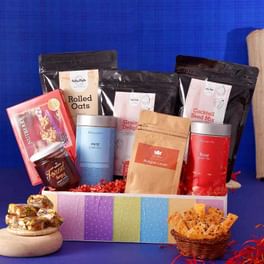When you think of sending a wine hamper, you probably picture a beautifully arranged basket of bottles, corkscrews, and a handwritten card. But behind that polished surface lies a delicate dance of packaging, cushioning, and temperature control. If you’ve ever watched a wine delivery arrive with a bottle that has a “new” crack or a cork that has gone rogue, you know the stakes are higher than a sommelier’s scorecard. This article will walk you through how to pack a wine hamper for safe transport—from choosing the right box to the final inspection—so your gift arrives as pristine as the day it left your kitchen.
Understanding the Challenge: Why Packing Matters
The Fragility Factor
Wine bottles are glass, and glass is a fickle friend. Even a gentle bump can send a bottle tumbling like a shaken soda can. A single crack not only ruins the bottle but can also create a safety hazard for anyone handling the hamper. When you’re shipping a hamper, you’re essentially putting a fragile piece of art on a roller coaster that may turn, tilt, and jostle.
Temperature and Timing
Glass is also a poor insulator. If a hamper is left in a hot truck or a cold van, the wine can suffer from “bottle shock” or, in extreme cases, freeze. The ideal temperature for most red wines is around 55 °F (13 °C). If you’re shipping a hamper across the country, you’re dealing with unpredictable climates. This is why many professional wine shippers use insulated containers or gel packs to keep the bottles within a safe temperature range.
Gathering Your Toolkit
Essential Packing Materials
- Bubble wrap or foam sheets Soft towels or foam padding Cardboard boxes (double‑walled if possible) Packing tape Styrofoam inserts or custom foam molds Gel packs or ice packs (for long trips) Label printer or waterproof markers
Choosing the Right Box
The box is the first line of defense. A double‑walled cardboard box offers extra rigidity, reducing the risk of collapse. If you’re using a wooden crate, make sure it’s sealed and has a secure lid. Remember, the box should be slightly larger than the tallest bottle plus the extra height needed for cushioning.
Step‑by‑Step Packing Process
Layering the Foundation
Start by laying a base of soft towels or foam sheets at the bottom of the box. Think of it as laying a cushion for a sleeping bag—soft enough to absorb shock but firm enough to support weight. Place the first row of bottles upright, ensuring they’re snug but not pressed against each other. The idea is to create a stable “tower” that can resist tilting.
Securing the Bottles
Wrap each bottle individually with bubble wrap or foam. If you have a set of identical bottles, you can use a single foam insert that fits all of them. After wrapping, stack the bottles in a staggered pattern, similar to how you’d stack oranges to prevent wobbling. The key is to avoid any gaps where a bottle could shift during transit.
Adding the Extras
Once the bottles are secure, fill any remaining space with soft padding. This not only prevents the bottles from moving but also protects any fragile accessories like a corkscrew or a small wine glass. If you’re including a handwritten card, place it on top of the padding, ensuring it won’t get crushed.
Protecting the Hamper During Transit
Stabilizing the Load
If the hamper is being shipped by truck, it’s crucial to secure the box so it doesn’t shift. Use straps or tie‑downs to anchor the hamper to the vehicle’s frame. For air transport, place the hamper in the middle of the cargo hold, https://rivervuuu129.iamarrows.com/best-wine-hampers-for-corporate-events-2024 surrounded by other items that can act as natural shock absorbers.
Weatherproofing Tips
- Rain: Wrap the box in a waterproof tarp or use a plastic sleeve to keep moisture out. Heat: Place the hamper in a shaded area of the truck or use reflective insulation. Cold: Pack gel packs around the bottles, but keep them in a separate compartment so they don’t freeze the wine.
Final Checks and Delivery
Inspection Checklist
- Bottles: No cracks, no visible damage. Cork: Intact and snug. Box: No tears or weak seams. Temperature: Gel packs have maintained a suitable range. Labeling: Clear shipping address and handling instructions (“Fragile – Keep Upright”).
Delivery Etiquette
When the hamper arrives, ask the https://juliusarmz638.huicopper.com/eco-friendly-wine-hamper-packaging-solutions-sip-save-and-smile delivery person to set it down gently. If you’re picking it up yourself, use a dolly or hand truck to avoid sudden jolts. Once on the porch, open the hamper with a celebratory “cheers” and a quick inspection to confirm everything is in top shape.

The Perfect Gift Awaits
Packing a wine hamper isn’t just about keeping glass from shattering—it’s about honoring the experience you’re gifting. Think of each bottle as a tiny bottle of adventure; you want it to arrive as if it had just left the vineyard. By following these steps, you’ll ensure that the recipient enjoys the full bouquet, aroma, and flavor they deserve.
Remember, a well‑packed hamper is a testament to care and attention. So next time you decide to send a selection of your favorite wines, ask yourself: “Did I treat this as a treasure chest, or did I leave it on a cliff?” The answer will guide you to pack with confidence, ensuring the gift reaches its destination in perfect condition.
If you found these tips helpful, consider sharing this guide with friends who love wine but dread the packing process. And for those who want to take their packaging skills to the next level, explore professional wine shipping services that specialize in climate‑controlled transport—because sometimes, a little extra investment goes a long way in preserving the joy of a well‑chosen bottle. Cheers!
